The Need for Improvement
- Barnes Jewish Hospital earns high scores in most categories of evaluation.
- Patients need a higher quality of care with reduced costs.
- The healthcare system is evolving, and the hospital needs to improve in accordance with the evolvement.
Barnes Jewish is an excellent health care organization, which cares about its medical staff and patients. This presentation aims to explain the importance of improving evaluation benchmarks to the primary stakeholders, the medical staff. As stated by Trastek, Hamilton, and Niles (2014) “our current health care system is broken and unsustainable” (p. 374). The main challenge is to reduce costs while providing patients with high quality of care. The recent changes in how the healthcare system operates (Affordable Healthcare Act) are placing additional pressure on healthcare organizations to improve their operations. The benchmark evaluation has shown that there are a few categories that should be enhanced to respond to the challenges.
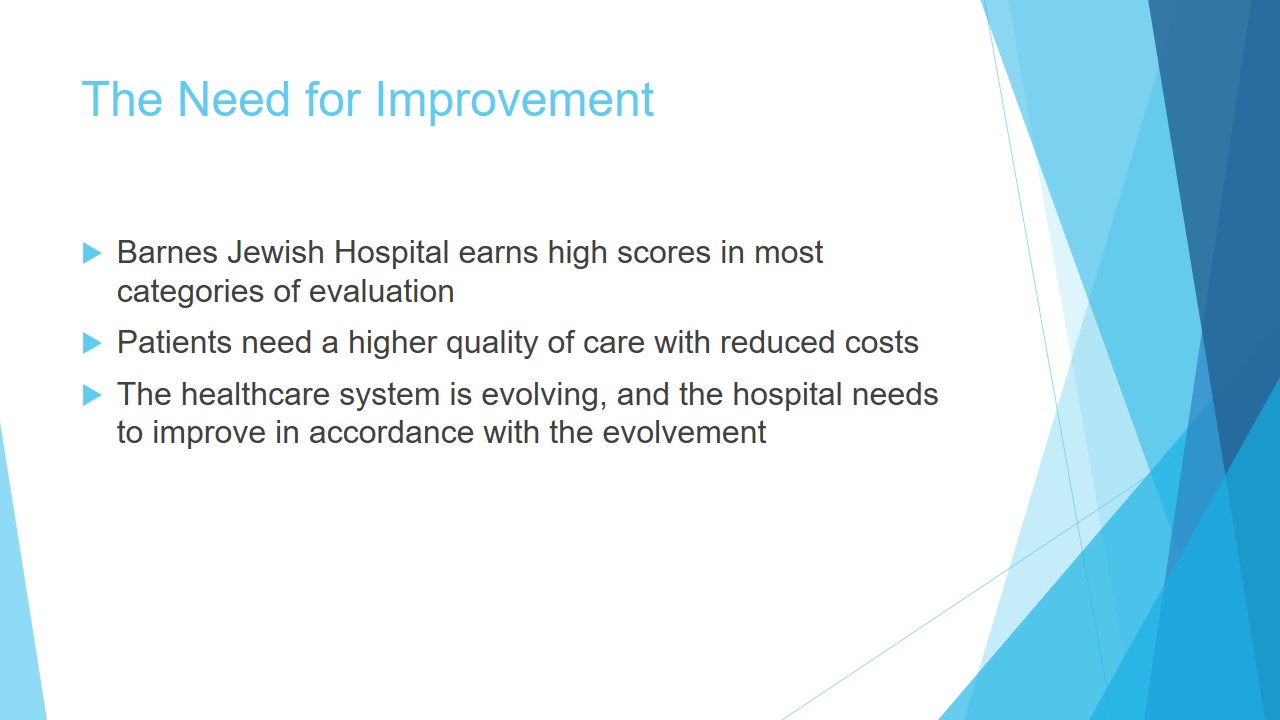
The Benchmark Metrics
- The medical personnel of Barnes Jewish can improve the outcomes of services.
- Healthcare providers have the ability to find the best strategies for the improvement of the value of care (Trastek, Hamilton & Niles, 2014).
- Improved quality of work.
- More healthy and satisfied patients.
- More advanced safety measures.
The medical staff of this hospital spends many hours helping patients and communicating with them. Thus, doctors and nurses have the ability to connect with people who come to Barnes Jewish and to understand their needs. This connection can help improve the hospital’s operations to enhance the metrics, but more importantly, to create better patient experience and outcomes.
The perspective of this policy for the medical staff is a difference in the quality of work. The team will be able to provide patients with more compassion, better attention to detail, and improved safety that will result in an increased number of healthy patients who leave the hospital satisfied. Currently, the hospital earns the highest scores in most benchmark evaluation categories. However, there are a few factors that need enhanced by the implementation of changes.
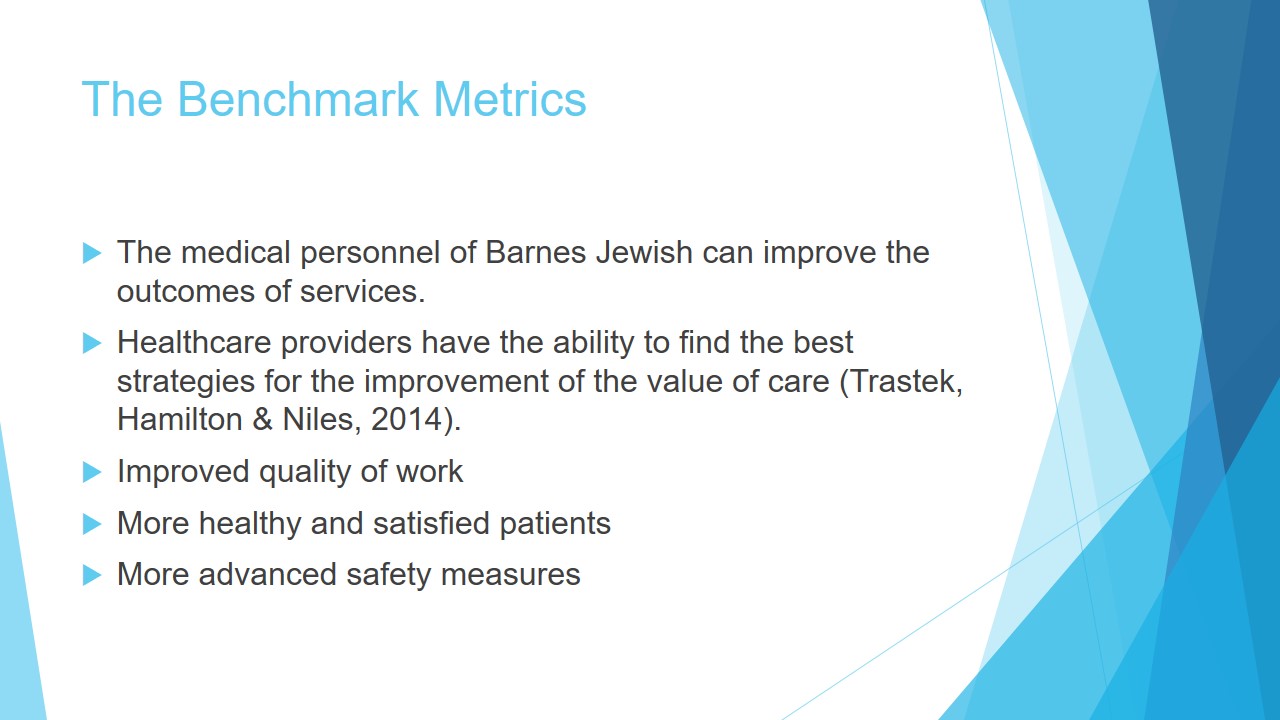
Metric Interpretation
- The metrics that require improvement are:
- Patient Satisfaction (72,4%);
- Readmission Rates (9,36%);
- Standardized Infection Ratio (1,14) (“Patients safety”, n.d.).
According to Al-Abri and Al-Balushi (2014), patients satisfaction score is a vital source of information that should be used for quality improvement.
Patient’s satisfaction ratio is a metric that helps gain insight into how people who are admitted to the hospital perceive the quality of services provided by the establishment. The score is critical as it can affect the number of patients that choose Barnes Jewish as their health care provider. It is a way for patients to critique some of the aspects of work that they were unsatisfied with, while for the medical personnel it is a guide for improvements.
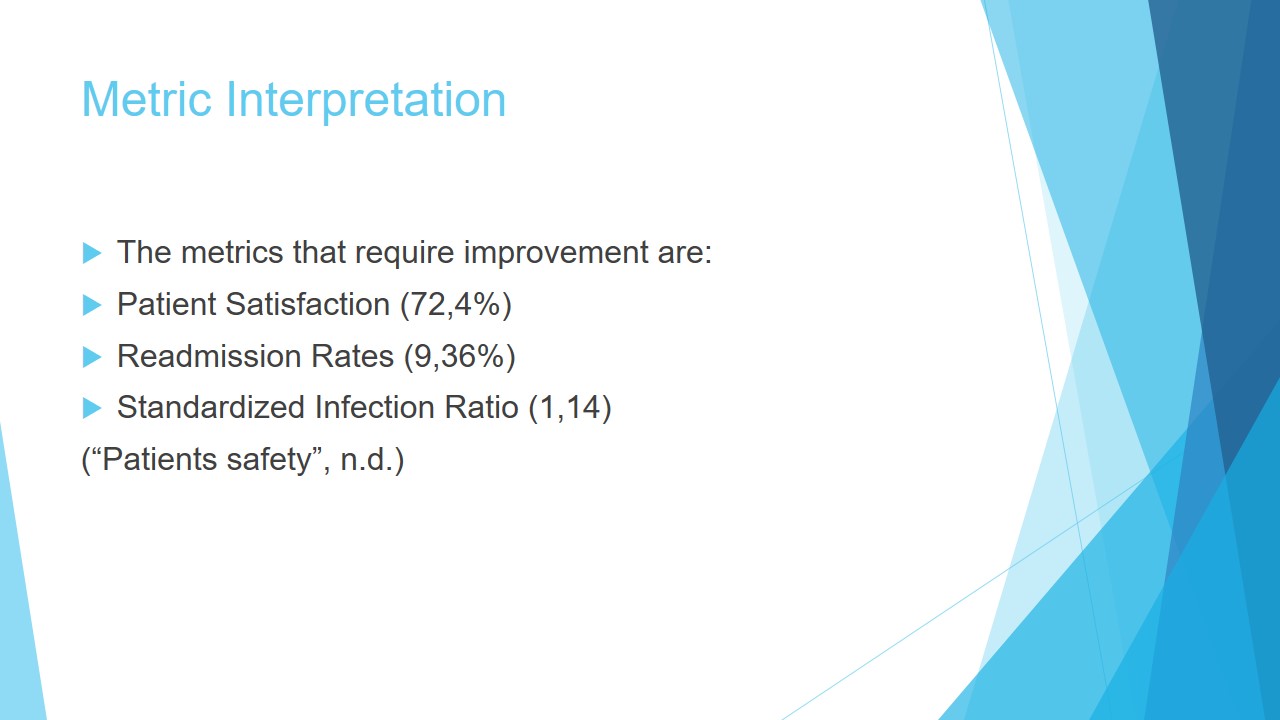
Policy Changes
- Patient satisfaction is the reflection of service quality.
- Readmission rates are showcasing the quality of work.
- Standardized infection ratio is a safety indicator for the hospital.
- Enhancing communication between teams.
- Improving interpersonal communication skills for nursing staff.
- Providing resources for further research on causes of infections within the hospital.
Patients’ satisfaction score is critical in this improvement plan.
Readmission rates indicate how many patients have to return to the hospital after discharge.
Low score for readmission rates can be an indicator of problems within the hospital regarding the quality of healthcare that the patients get. The metric is especially critical for those who are admitted to the emergency department. According to Nguyen et al. (2018), the vast majority of readmissions occur due to complications after previous visits to a healthcare provider.
Standardized infection ratio showcases how many infections were registered in a particular setting.
Improving standardized infection ratio is essential as it is an indicator of safety for the medical personnel and for the people who come to Barnes Jewish.
It is critical to implement strategies that will effectively solve the problems with low benchmark scores. Sarkies et al. (2017) state that hospital administration rarely utilizes evidence-based research in their change implementation. However, Barnes Jewish hospital will implement the policy that is based on research to improve patient outcomes, to avoid risking the quality of services that the hospital provides. Furthermore, one of the objectives of the Affordable Care Act is to reduce costs, which will be done through lower readmission rates (“The future of U.S. healthcare”, n.d.).
Firstly, it is crucial to pay more attention to the communication between teams, especially in the emergency department. The next specific policy that is proposed for this hospital is an improvement in interpersonal communication skills. The change can be carried out in the form of additional courses for the staff of the hospital, which will help the nurses and doctors to speak with more compassion.
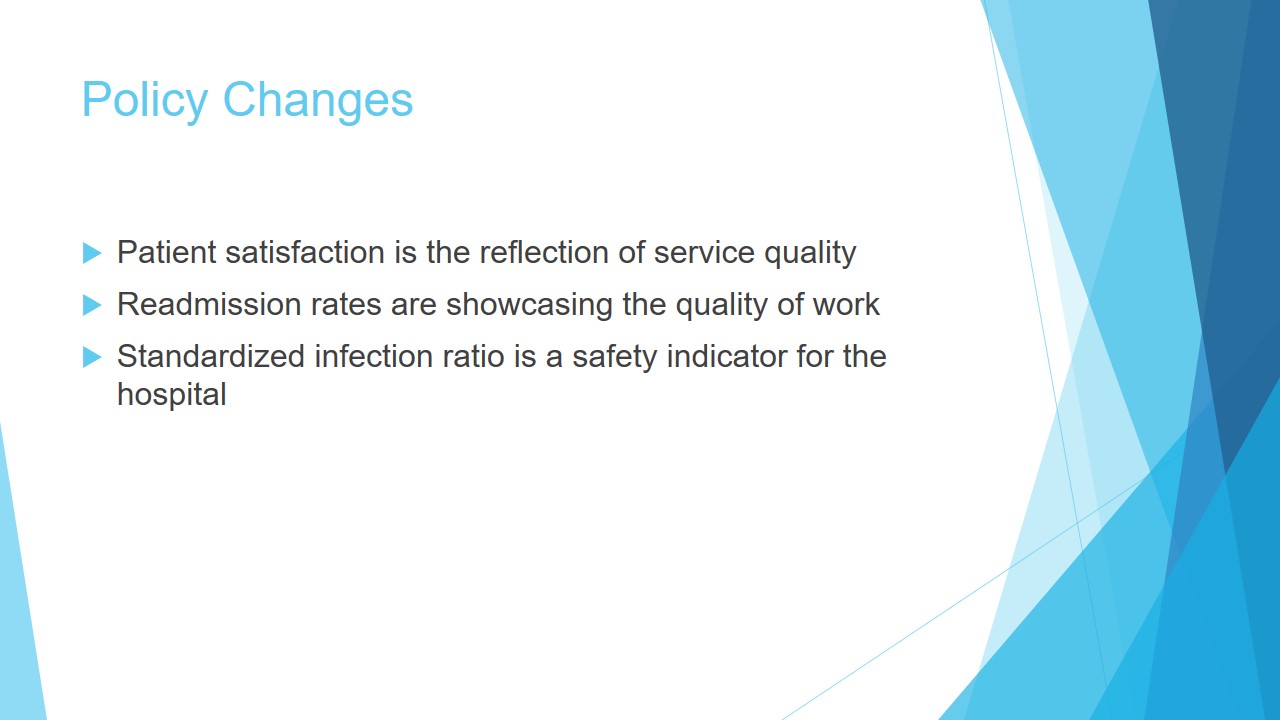

The Overall Goal of Policy Changes
- Improve the quality of services.
- Provide patients with compassion through communication.
- Improve the image of Barnes Jewish Hospital.
Implementing the policy will be impossible without an agreement among stakeholders on how it should be carried out. As Trastek, Hamilton, and Niles, (2014) state, “to create change, health care providers must learn how to effectively lead patients, those within healthcare organizations, and other stakeholders” (p. 337). The new policy will help drive performance to improve as they target the specific areas that underperform and offer an evidence-based solution. From an organizational standpoint, the policy and practice guidelines are important as they help set specific goals and give a plan on how to achieve it. The overall aim of this policy is to improve Barnes Jewish Hospital’s image in the eyes of patients by giving them the best health care. This goal applies to not only medical procedures but to the communication and compassion that the staff should provide.

The Tasks and Responsibilities of Medical Staff
- The emergency department will communicate more with other teams.
- Nurses will devote more time to listening and speaking with patients.
- Medical personnel will work on strategies to reduce incidents of infections.
- Changes in how tasks are performed are required.
- Collaboration between staff members will be needed.
- Workload will not increase significantly.
The main aim of this presentation is to highlight the importance of collaboration between the staff in order to improve the metrics and patient outcomes. According to Tordrup, Angelis, and Kanavos (2013), “policy options that are broadly acceptable across stakeholder groups with different inherent interests exist but are limited to lifestyle modification, screening interventions and excise taxes on harmful products” (p. 639).
In accordance with the new policies, the staff of Barnes Jewish Hospital will have to change the way they perform their daily tasks. More time should be devoted to communication and listening.
Additionally, the staff will work on creating a strategy for reducing the infection ratio within the establishment. This approach will not lead to a significant workload increase, as mostly the policy offers to devote more time to attention to detail, which is carried out through enhanced communication. The responsibilities of the personnel will remain the same; their main work objective will be to care for the patient’s wellbeing. Working conditions will improve as the tasks will be performed more carefully, the teams will focus on providing as much information as possible to each other. In addition, the patients who will experience the improvements will be more satisfied with the outcomes of treatments.

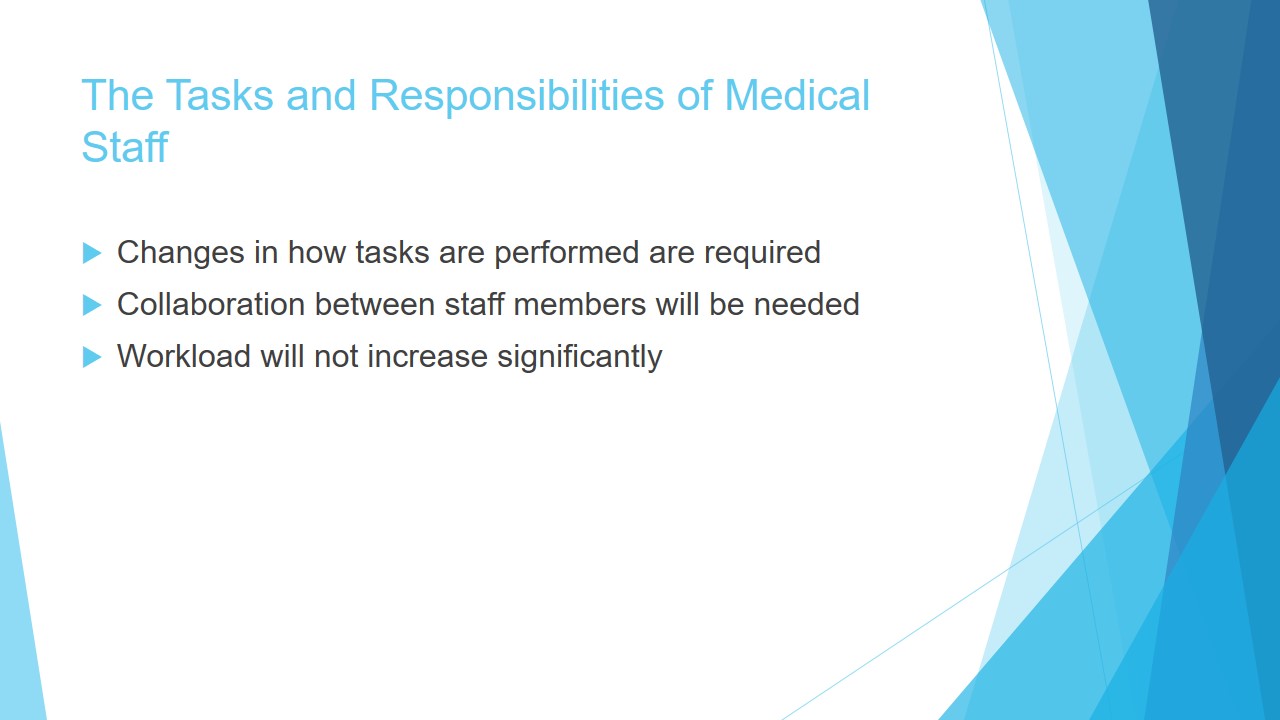
Improvement in Quality of Work Outcomes
- Focus on improving collaboration between teams.
- Better outcomes for patients.
- Refining the communication with patients.
- More compassion provided by nursing staff.
- Research on causes of increased infection ratio.
- Enhancing safety within the facility.
- Better outcomes of work.
- Successful team.
- Enhanced performance.
The policy will help upgrade the quality of work for the group. Firstly, enhancing the communication between the emergency unit and other departments will help in understanding the causes of diseases better. The improvement in this aspect will lead to better health outcomes for the patients, as they will less likely be readmitted to the hospital (Nguyen et al., 2018). Additionally, the nurses’ interactions with patients will be more productive which can give them more understanding of the patient’s condition. Finally, the decrease of the standardized infection ratio will ensure that Barnes Jewish Hospital is a safe place for work. Thus, the changes should make Barnes Jewish Hospital a better job provider due to improvements in quality of work for the personnel. Therefore, the staff will be more successful with this policy in place.
The policy is directed at improving the Barnes Jewish Hospital in accordance with the changes in law and the overall development of the healthcare system. The Affordable Care Act requires evaluating benchmarks of performance as they help enhance the process. The implementation of the proposed strategy will ensure that the personnel can perform their duties with maximized efficiency.
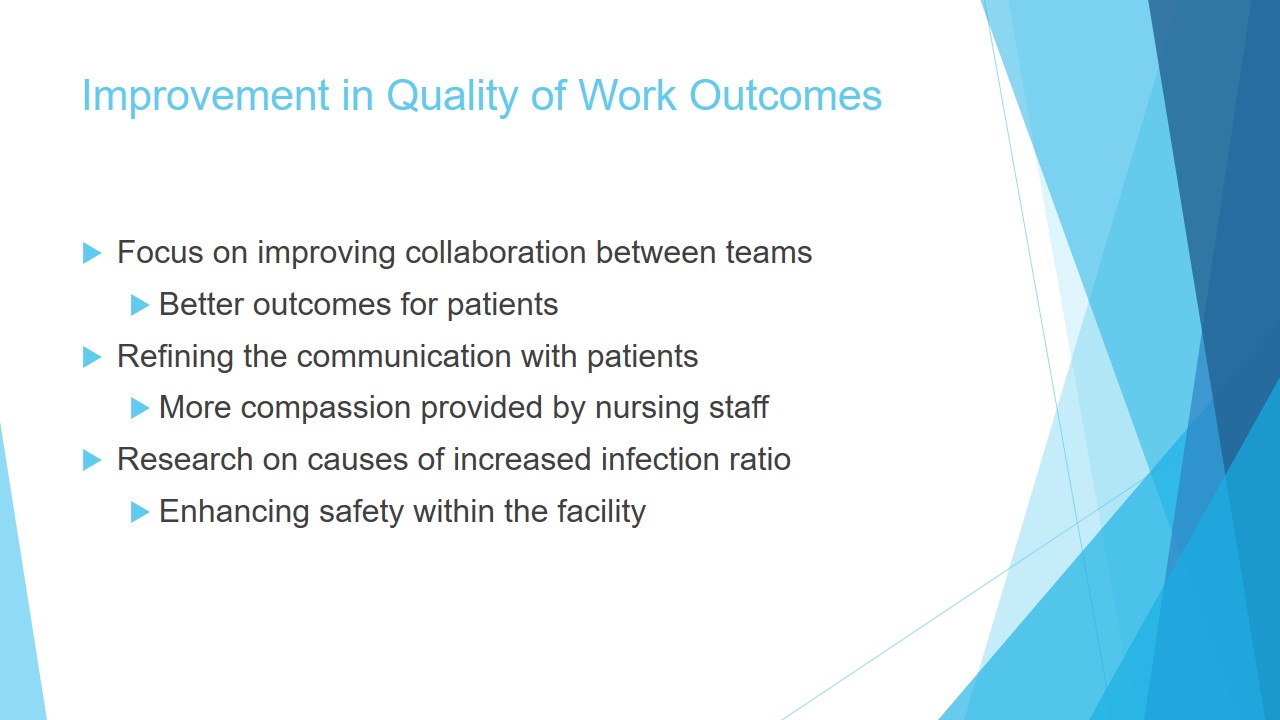
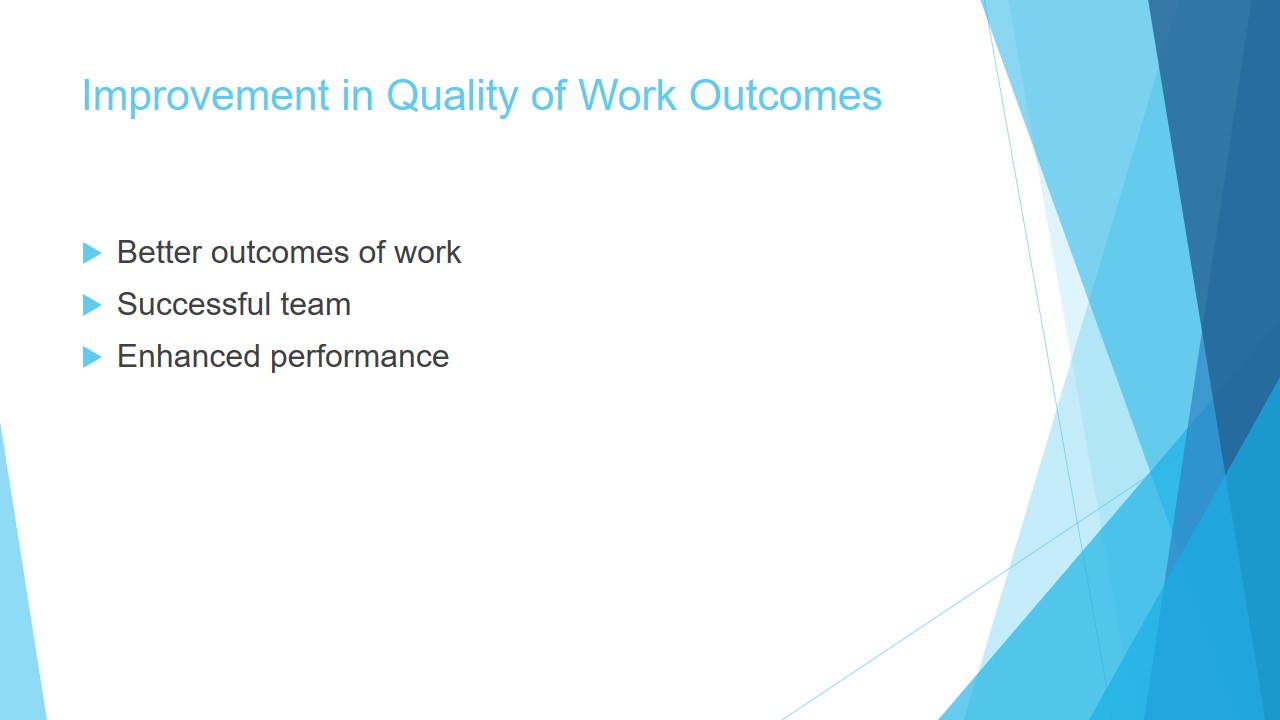
Collaboration within the Hospital
- The medical staff is an essential component of implementation for this policy.
- The personnel can offer insight and changes to the plan.
- Collaborative work is the key to success for Barnes Jewish Hospital.
- According to Sarkeis et al. (2017), “employing effective communication strategies and providing resources to support change underpin these factors, which should inform the design of future implementation strategies.” (p. 132).
- Objections to the plan will be discussed with the personnel.
It is essential to understand that every staff member has a critical role in improving Barnes Jewish Hospital. The personnel interact with patients daily while helping them to improve their health condition. Thus, every member of the team should be included in the implementation.
The stakeholders are encouraged to propose their changes to the policy. The hospital values their opinion; thus they should choose any communication channel (personal communication, email, letter or note) to express their thoughts and ideas. Additionally, we offer the staff an opportunity to conduct their research on the benchmarks that were discussed to either support or prove ineffectiveness of the plan.
The proposal aims to improve how the hospital personnel communicates; thus it is vital to review the policy and opinions on it. Effective collaboration on ensuring the plan is carried out effectively will guarantee successful outcomes for the personnel. Possible objections to the project such as the need to devote more time to speaking with patients will be discussed separately. Thus, the staff should not be afraid to step forward if such opinions are present.

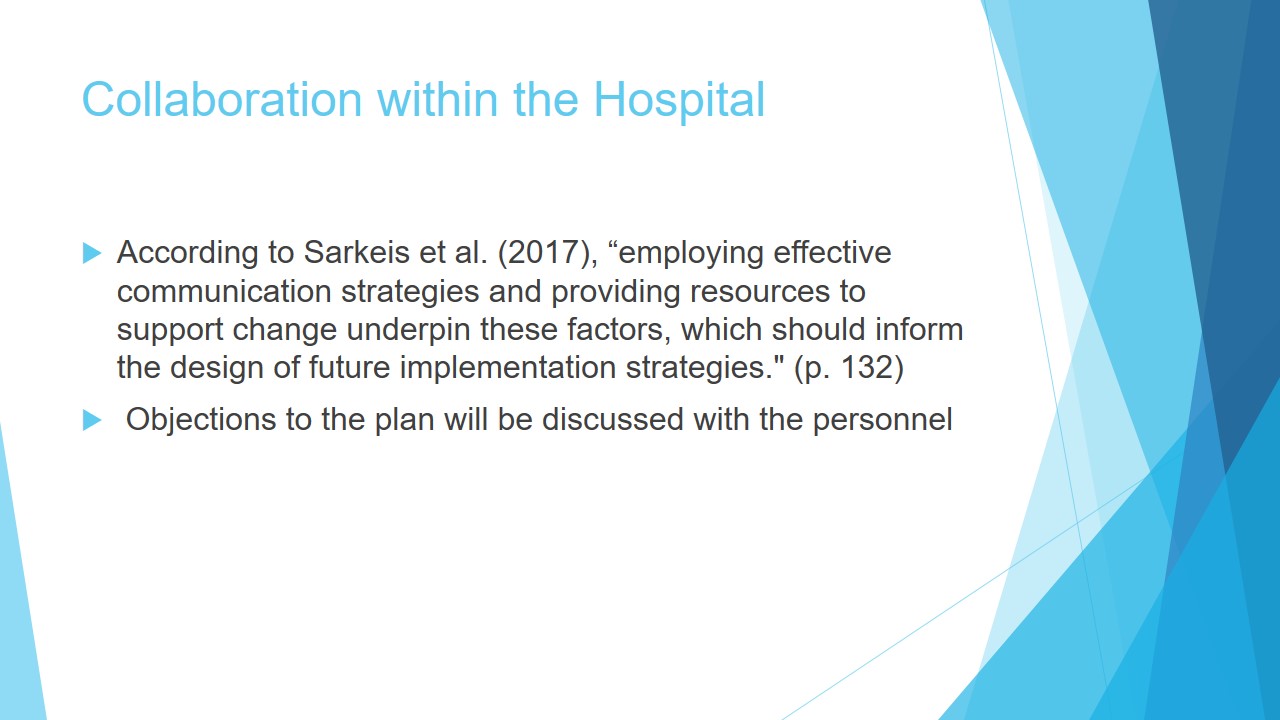
References
- Al-Abri, R., & Al-Balushi, A. (2014). Patient satisfaction survey as a tool towards quality improvement. Oman Medical Journal, 29(1), 3-7. Web.
- Nguyen, J. T., Vakil, K., Adabag, S., Westanmo, A., Madlon-Kay, R., Ishani, A., … McFalls, E. O. (2018). Hospital readmission rates following AMI: Potential interventions to improve efficiency. Southern Medical Journal, 111(2), 93-97. Web.
- Patients safety & quality annual report. (n.d.). Web.
- Sarkies, M. N., Bowles, K. A., Skinner, E. H., Haas, R., Lane, H. & Haines, T. P. (2017). The effectiveness of research implementation strategies for promoting evidence-informed policy and management decisions in healthcare: A systematic review. Implementation Science, 12(1), 132. Web.
- The future of U.S. healthcare: Replace or revise the affordable healthcare act? (n.d.). Web.
- Tordrup, D., Angelis, A., & Kanavos, P. (2013). Preferences on policy options for ensuring the financial sustainability of health care services in the future: Results of a stakeholder survey. Applied Health Economics and Health Policy, 11(6), 639-652.
- Trastek, V. F., Hamilton, N. W., & Niles, E. E. (2014). Leadership models in health care – A case for servant leadership. Mayo Clinic Proceedings, 89(3), 374-381.